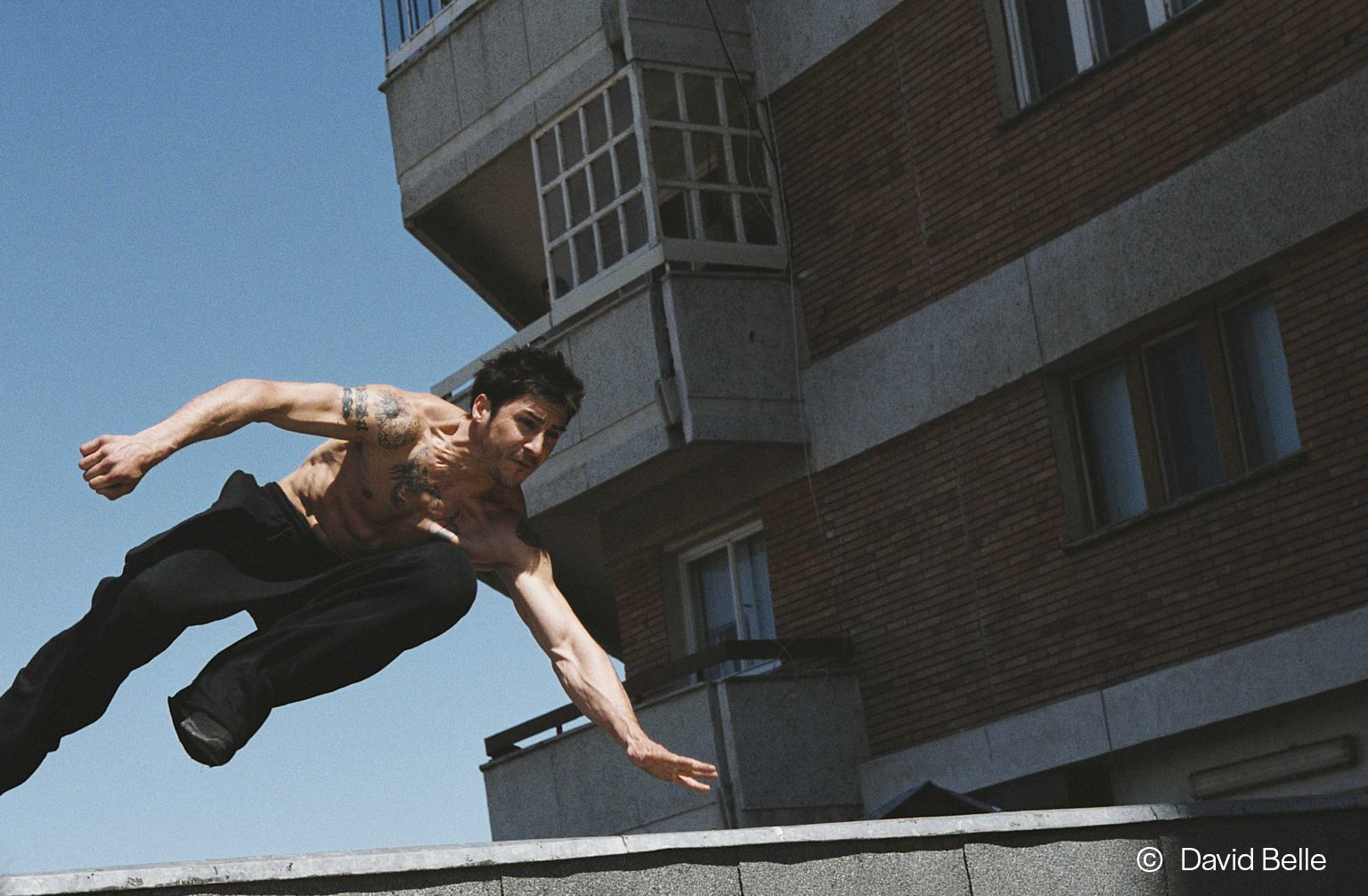Discover the world of parkour, its history, and its welcoming community.
Parkour is an urban action sport. The practice of parkour centres around the use of the individual's environment – it's incredibly accessible, requiring no additional equipment. It involves using your body to navigate the world around you, with movements like jumping, swinging, climbing, rolling, and vaulting.
Whilst you might have seen some amazing athletes doing incredible things on social media, parkour can be a brilliant way to start moving if you have never been active before, as part of a very welcoming, inclusive community.
The UK has always been a leading figurehead within the sport, with various commercials, documentaries, films, and popular online videos influencing the international parkour community's approach to the sport. You can learn more about the UK's impact on the international parkour community below.
There is now a thriving network of indoor parkour parks, with friendly coaches who are qualified to support you, whether that’s just starting your parkour journey, or as someone who is already practicing the sport who just wants to get better.

Parkour is a relatively young sport that originated in the suburbs of Paris during the late 1980s and early 1990s. As an art form that evolved alongside the internet, parkour quickly gained global recognition and evolved into the sport it is today. Originally a non-competitive discipline, parkour has developed over the last 20+ years.
Parkour now features many grassroots competitions and is practiced all over the world.
Although it is challenging to pinpoint exactly when parkour first made its way to the UK, several key pieces of media helped introduce and popularise it.
In 2002, David Belle, the founder of parkour, starred in a 90-second BBC commercial called Rush Hour. The ad featured Belle leaping across London rooftops to the music of Dean Martin's Sway. It was designed to showcase the BBC's renewed spirit and dynamic identity in the television space.
Credit - BBC One

The 2002 Rush Hour BBC One commercial inspired filmmaker Mike Christie to create two documentaries that aired on Channel 4. The first was Jump London in 2003 , and it's sequel Jump Britain, released in 2005.
Both documentaries were broadcast worldwide and played a crucial role in the UK's adoption of parkour as a discipline.
After a surge in popularity following the Channel 4 documentaries, parkour quickly became a widely practised discipline in the UK. Schools were eager to add parkour workshops to their offerings, while filmmakers and major brands sought to feature parkour in their films and commercials. Additionally, parkour coaching organisations began to emerge, helping individuals start their journey in the sport.
In 2017, led by Parkour UK, the UK became the first country to officially recognise parkour as a sport. This was a major milestone for the parkour community, opening up new opportunities for growth and support.
With official recognition, parkour became eligible for grants and National Lottery funding, facilitating the development of training spaces, coaching programmes, and community initiatives. As a result, parkour has become more accessible across the country, allowing more individuals to participate in structured classes and grassroots projects.
Your child has expressed an interest in learning parkour; you don’t know anything about it so like most parents you turn to the internet to find out more. You Google "parkour videos" and the first video that is recommended to you is ‘the world’s best parkour and free running’, it has 130 million views so it must be a good indicator of what parkour is — right? Within the first 30 seconds you’re shown someone doing a handstand on a roof edge, balancing on a rail at height, and someone walking on the edge of a roof!
There is a lot more to parkour than what you see online. This podcast episode with Zoe, a mum of a parkour practitioner, talks about the positive impact our sport and community has had on her child, Joel.